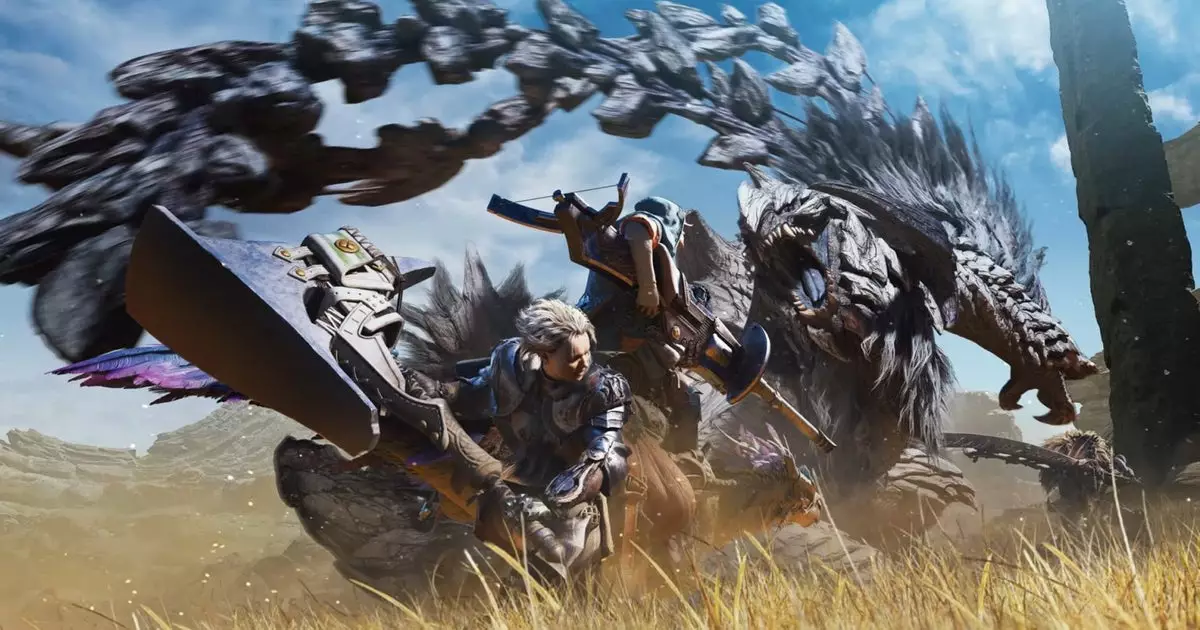The Monster Hunter franchise holds a revered position in the gaming community, offering players the exhilarating experience of battling massive beasts with an array of weapons. With the latest installment, Monster Hunter Wilds, the developers at Capcom have introduced a variety of new creatures, including wyverns, toads, and arachnids. However, despite the influx of fresh monsters, the weapons’ evolution feels surprisingly traditional. The core mechanics remain mostly unchanged, presenting refined yet recognizable weapon categories that echo earlier iterations of the series. Notably, players can observe a continuity persisting even from the 2007 release of Monster Hunter Freedom 2 on the PSP, which reflects the game’s commitment to preserving its legacy while exploring new dimensions of gameplay.
Monster Hunter Wilds director Yuya Tokuda emphasized that the team’s approach to weapon development has shifted towards enhancing existing frameworks rather than creating new ones. In a recent conversation with PCGamesN, Tokuda reiterated a thoughtful stance: the focus lies in fine-tuning and balancing the current weapons before considering the introduction of entirely novel types. This strategy showcases a desire to deepen engagement with established weapon categories rather than diluting them with additional convolutions. For instance, while the Insect Glaive debuted in Monster Hunter 4 brought some excitement, it appears that the recent focus has leaned more towards refining the existing arsenal.
Players currently have access to a versatile toolkit comprising 14 distinct types of weaponry. The Greatsword and the Hunting Horn are polar opposites in execution; the former caters to those who prefer brute strength, while the latter demands a more strategic approach. Tokuda’s challenges in envisioning a 15th weapon, one that seamlessly integrates into this well-established framework, underscore the difficulty of maintaining balance without introducing redundancy or complexity that could muddle the gameplay experience.
While the prospect of new weapons can tantalize fans, the team’s decision-making process reveals a deeper commitment to quality. An emphasis on refining weapon characteristics and expanding movesets contextualizes this approach. Introducing additional weapons involves significant resource allocation, which, as Tokuda points out, could be better spent optimizing existing gameplay mechanics. The interplay between weapons is pivotal, and the developers strive to create a fresh exuberance for players. Additionally, with each title update, they have adjusted various aspects to create a more synergistic experience, where each weapon feels distinct yet interrelated.
In the specific case of Wilds, Capcom faces pressure to incorporate elements from the expansive Iceborne pack found in Monster Hunter: World. Bringing back techniques familiar to seasoned players presents another layer of complexity, as expectations rise for advanced moves and strategies. Tokuda acknowledges that this necessity hones players’ skills and mastery beyond the surface level, challenging them to delve into deeper nuances of combat.
What makes this discourse around weapons and creatures even more intriguing is the imaginative potential surrounding monster design itself. It’s fascinating to consider Capcom’s creative process in crafting the beasts of Monster Hunter. Each weapon is a testament to the monsters it is derived from, fueling speculation of how far the developers can push boundaries in their designs. Perhaps, as a humorous suggestion, the company could experiment by manipulating monster designs to yield increasingly unconventional or absurd results. Picture a wyvern shaped entirely like a balloon or a creature that defies traditional forms entirely, thus challenging the blacksmiths to engineer inventive weaponry from these novel inspirations.
As Monster Hunter Wilds continues to evolve, the fusion of tradition and innovation remains a central theme. The emphasis on weapon balancing and refinement reveals a dedicated approach to preserving what players love while carefully expanding the game world. As fans dive into this rich ecosystem filled with fearsome adversaries, they’ll undoubtedly appreciate the work done to enhance existing weapons—a testament to Capcom’s respect for the franchise’s history. The question begs: will the next installment finally offer the creative weaponry inspired by fantastical new design philosophies that keep players yearning for more? Only time will tell, but the potential for exhilaration in both combat and creation is ever-present.

